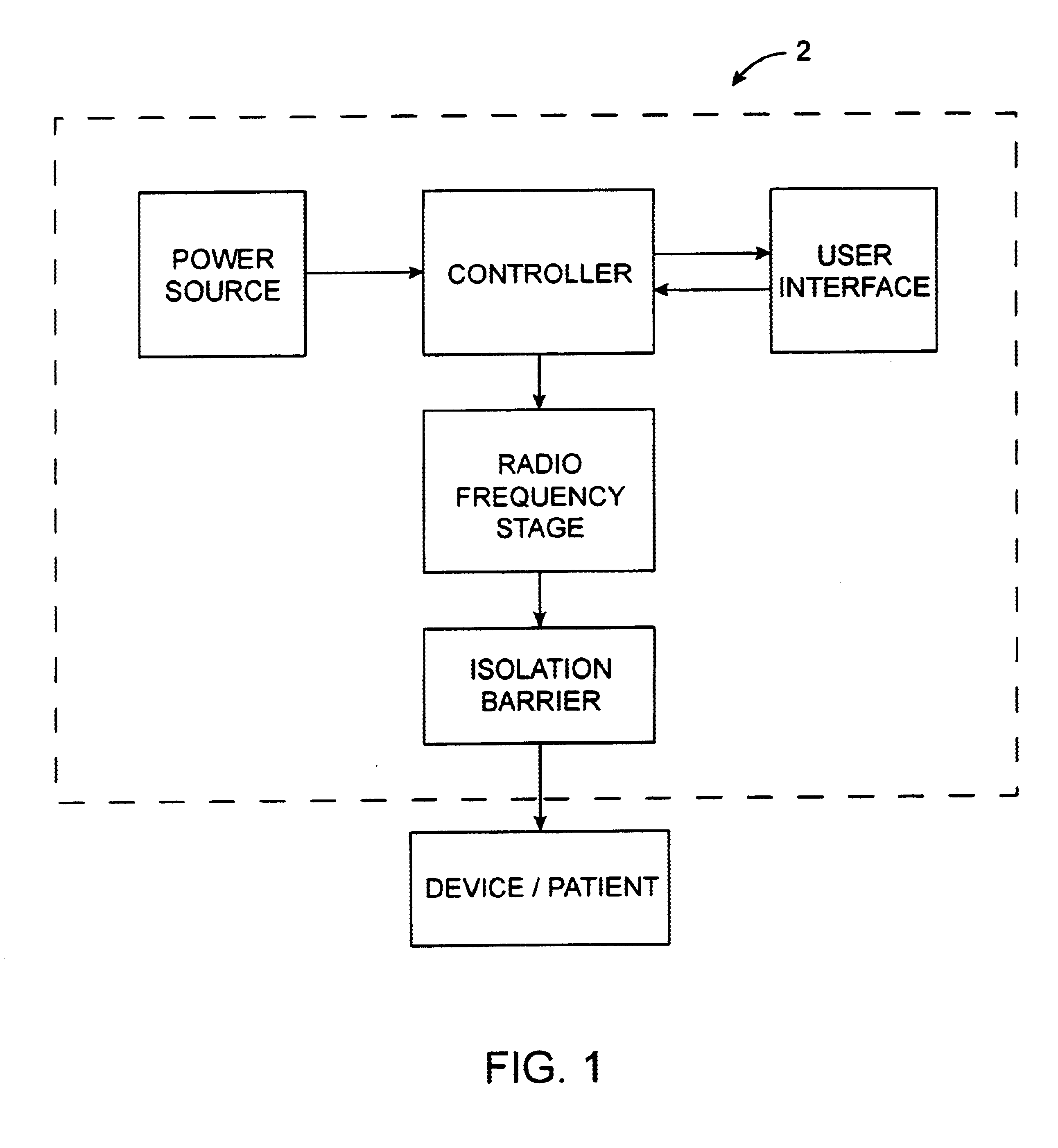Method and system for heating tissue with a bipolar instrument
a bipolar instrument and tissue heating technology, applied in the field of radio frequency energy, can solve the problems of increasing the electrical impedance between the electrode and the tissue, the increase of the electrode-tissue interface impedance,
- Summary
- Abstract
- Description
- Claims
- Application Information
AI Technical Summary
Benefits of technology
Problems solved by technology
Method used
Image
Examples
Embodiment Construction
Methods, systems, and apparatus according to the present invention will rely on the controlled delivery of radio frequency power to electrode members of a bipolar surgical instrument placed at or within a treatment tissue region of a patient for heating and / or desiccating the treatment tissue. FIG. 1 illustrates a functional flow diagram of an overview of the bipolar radio frequency power apparatus of the present invention. The radio frequency power apparatus or generator 2 comprises a radio frequency power source having a controlled voltage output and a bipolar connection for bipolar forceps or the like. The desired radio frequency power may be supplied by a conventional general purpose electrosurgical power source operating at a frequency between 100 kHz to 2 MHz, preferably from 400 kHz to 500 kHz, with a conventional sinusoidal or non-sinusoidal wave form. Preferred power sources will operate at relatively low fixed voltages, typically from 100 V to 240 V. In all cases, current ...
PUM
 Login to View More
Login to View More Abstract
Description
Claims
Application Information
 Login to View More
Login to View More - R&D
- Intellectual Property
- Life Sciences
- Materials
- Tech Scout
- Unparalleled Data Quality
- Higher Quality Content
- 60% Fewer Hallucinations
Browse by: Latest US Patents, China's latest patents, Technical Efficacy Thesaurus, Application Domain, Technology Topic, Popular Technical Reports.
© 2025 PatSnap. All rights reserved.Legal|Privacy policy|Modern Slavery Act Transparency Statement|Sitemap|About US| Contact US: help@patsnap.com



